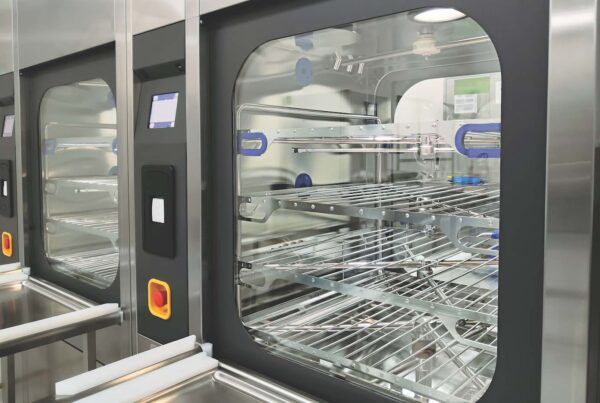Introduction
Hackensack Meridian Health is a large healthcare institution in New Jersey, USA. The hospital was facing challenges due to its growing patient volume and limited space in its existing building. To address these challenges, the hospital planned to move to a new tower with additional rooms and upgraded facilities. The move involved upgrading from 18 to 24 operating rooms and included hundreds of nurses, support staff, and medical providers occurring over 6 months. The hospital hired a healthcare consulting firm to help with the move and optimize the surgical suite operations in the new tower. The focus was on ensuring patient safety, tracking utilization of the operating rooms (ORs), and setting up for success in the new tower.
Problem
Hackensack Meridian Health faced several challenges before the move, including limited space in its existing building, growing patient volume, and the need to optimize surgeon access to the ORs. In addition, the hospital had to ensure a safe and effective move to the new tower, while maintaining financial stability.
Solutions
To address the hospital’s requirements and prioritize patient safety, the administration worked with the consulting firm to identify solutions. The consulting team established two essential metrics for their project, one focused on safely transporting patients without significant clinical incidents, and the other aimed to enhance surgeon access through data-driven measurements. These metrics served as performance indicators throughout the project and were closely monitored during the transition period
- Innovative simulation education and communication strategies:
- The team utilized innovative methodologies such
as QR codes, scavenger hunts, and a passport system, enabling employees to use their phones to scan codes and document their ability to locate essential parts, pieces, and places in the new hospital. This allowed staff and physicians to have hands-on experience and familiarize themselves with the new facility before moving in. - Communication was also critical to the success of the move. The team had to ensure effective communication both internally to staff and physicians and externally through various devices and communication pathways throughout the tower. One of the innovative communication strategies was the use of scripts given to each team member transporting a patient from the old building to the new building. This script was formed according to high-reliability organization standards to limit near-missed events and ensure safety. The team also utilized electronic devices to ensure communication was never missed. The team faced challenges such as different Wi-Fi signal downtime, dead zones in the new tower, and loss of communication due to device troubleshooting.
- The team utilized innovative methodologies such
- Enhancing Surgeon Access and Usage of Operating Room (OR):
- A block forecasting and utilization method was devised by the consulting team to ascertain the block requirement for each surgeon or specialty in the upcoming year. This information informed the decision-making process to introduce a new surgeon access system in the new tower. Surgeon access scorecards were created for all operating surgeons in Helena Theurer Pavilion (HTP), facilitating data-driven decisions while standardizing OR block management.
- The consulting team also established a consensus among surgeons to optimize flip room usage. This approach fostered standardized procedures across various departments that integrated with the OR, resulting in improved patient and staff safety, efficiency, and communication.
- Transparent project planning for execution: To execute the move within a set time, the team created a comprehensive project plan that incorporated a precise timeline and a strategy for every department’s relocation. Additionally, the team established a revamped communication framework, consisting of a governance body, multiple work-streams, and a feedback loop to manage risks effectively. Timely risk mitigation was essential as various risks arose throughout the project, and the team communicated consistently with relevant key stakeholders to ensure a successful transition.
- Streamlining inventory and supplies to drive cost containment: Effective management of materials is a critical determinant of hospital expenditures in present times. As part of the consulting team, a specialist in this area analyzed the inventory of supplies and focused on enhancing the central sterile core operations by streamlining the organization on each floor. To ensure efficient utilization, minimize waste, and manage inventory and supply costs, it was essential to comprehend the movement of materials between buildings and new department locations.
- Looking beyond the finish line: Another solution was to focus on the effects after the move. The consulting team worked with the hospital to anticipate growth and plan for add-ons during the day to reduce patient length of stay and help with cost relief. They also strategized with the hospital’s leadership team to identify the service lines they wanted to focus on, where they needed to grow, and what they needed to achieve that growth.
Results
The move to the new tower was a success, as all patients were safely transferred to their new location without any significant clinical incidents reported. The consulting team utilized block forecasting to estimate the required blocks and inform decision-making while implementing a new surgeon access system, which significantly improved surgeon access by redesigning the system to accommodate future growth and enhance operating room utilization. The hospital administration collaborated with the consulting firm to optimize flip room utilization, develop standard guidelines, and build consensus to manage flip rooms more effectively. Additionally, inventory and supplies were given more focus to mitigate potential bottlenecks and maintain material cost management.
The project is ongoing, and multiple phases have been identified for perioperative improvements in partnership with Hackensack Meridian Health, including
- OR Governance and NORA Block Redesign
- Materials Management, and
- Pre-Surgical Optimization
The materials management phase has identified $8 million in savings over the next 12 months in addition to increasing case volume and revenue. The project maintained elevated levels of communication and engagement among staff, providers, and administration, facilitating the continuation of sustainable initiatives beyond the move and supporting the organization’s success and growth in the new tower space.
Conclusion
The Hackensack Meridian Health hospital move to the new tower was a success, with improvements in patient safety, OR utilization, and surgeon access to the ORs. The focus on specific metrics, such as moving patients safely and block forecasting and utilization, contributed to the success of the project. The hospital administration’s efforts to communicate effectively and have focused engagement with the project helped optimize patient care, limit employee burnout, and enable financial stability for the future of the hospital. In addition, reviewing material and supply expenditures and the effects after the move was critical in ensuring that the surgical suite operations were well-managed, cost-effective, and efficient.




